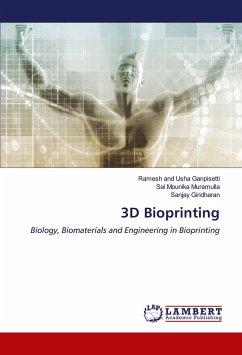3D Bioprinting is one of the most revolutionizing and emerging fields of the 21st century. In this book we will explain about the origin of 3D Bioprinting technology and how it evolved with time. This technology has hugely disrupted the domain of healthcare and medicine. 3D Bioprinting offers professional growth for people and towards the future of mankind. We are going to discuss about the 3D Printing and designing for additive manufacturing is a key to co-learn 3D Bioprinting. It introduces us to various technologies involved in 3D bioprinting and how each ofthem works and its application in industries. It provides perspective and interplay between cells and biomaterials. It also introduces us to a platform on different biomaterials used in 3D bioprinting. It focuses on how scaffold design is done and the importance of optimal scaffold design and cross-linking in a successful bioprint. This part focuses on the interdisciplinary aspect of the field of bioprinting and career aspects related to each discipline involved in the 3D bioprinting process.
Bitte wählen Sie Ihr Anliegen aus.
Rechnungen
Retourenschein anfordern
Bestellstatus
Storno








